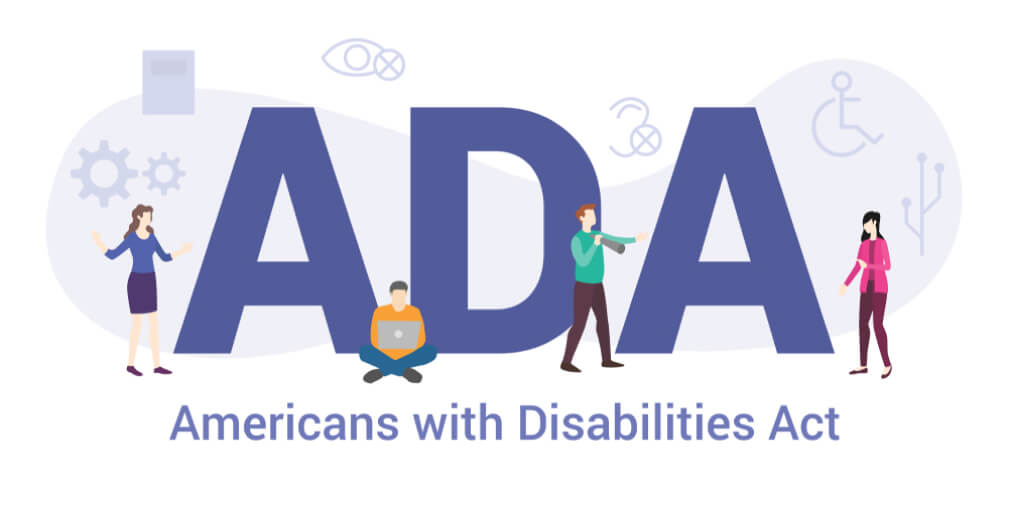In 2010, the United States Department of Justice released specific guidelines for all public organizations to follow to become accessible to all people with disabilities. This includes all disabled people who use computers and smart devices. Becoming ADA compliant is a proactive effort to not only make all organizations inclusive but also a proactive way for organizations to grow. If you want to learn more about what ADA compliant means and what makes a website ADA compliant, then keep reading.
Understanding ADA Compliance
ADA compliance is short for the Americans with Disabilities Act Standards for Accessible Design. In essence, it means that all electronic information and technology—your website or mobile application, for instance—must be accessible to those with disabilities.
It’s important to note that ADA is often confused with Section 508. While they share similarities, ADA is a civil law that mandates the inclusion of all people, especially those with disabilities, in all areas of public life. This includes the workplace, schools, transportation, and any other places open to the general public. So, while ADA requires websites and content to be accessible, it has broader guidelines that cover all disabilities and environments.
Who Should Follow ADA Requirements?

If all public spheres must adhere to ADA compliance standards, does that mean you do too? The answer is yes. ADA compliance applies to virtually all businesses and web developers because it encompasses all electronic information and technology, including the World Wide Web and all its websites.
Examples of those who should adhere to ADA compliance include:
- State and local government organizations
- Private organizations with 15 employees or more
- Places of business considered a place of public accommodation by Title III
- Organizations working for the public’s benefit (e.g., public transportation, schools, restaurants, bakeries, grocery stores, hotels, banks, accountant offices, law offices, social service centers, gyms, healthcare providers, the United States Postal Service, etc.)
Ultimately, all websites should be ADA compliant and inclusive to everyone, even if the ADA standards don’t apply directly to your organization.
How to Meet ADA Compliance Standards?
So, how do you comply with ADA? You do so by following the Web Content Accessibility Guidelines (WCAG). Across the board, the first recommendation you’ll receive is to go by WCAG 2.0. These guidelines have a three-tiered grading system:
- Level A: Your website is accessible by some users.
- Level AA: Your website is accessible by almost all users.
- Level AAA: Your website is accessible by all users.
WCAG guidelines are specifically designed to make websites accessible for all people, ensuring they are navigable and usable by those who cannot use or see the mouse.
Benefits of Complying with ADA
- Improve User Experience: An accessible website or app enhances the user experience for all visitors.
- Reach a Wider Audience: Accessibility opens doors to a broader audience, including those with disabilities.
- Legal Compliance: Ensuring ADA compliance helps you meet legal requirements, reducing the risk of litigation.
- Potential Business Opportunities: An inclusive digital presence can attract new customers and business opportunities.
Is WCAG the Same as ADA Compliance?
No, WCAG and ADA compliance are not the same. The ADA is a U.S. law that mandates websites must meet its standards as laid out by the Web Content Accessibility Guidelines (WCAG). Aligning your website with WCAG can help you comply with ADA law and open up new opportunities to reach potential customers.
Points to Remember for ADA Compliance
When creating ADA compliant websites or mobile applications, keep these key points in mind:
- User Interface and Navigation: Ensure clear labeling of app elements, sufficient contrast, large text options, and support for screen readers and assistive technologies.
- Multimedia Content: Provide closed captions or transcripts for video and audio content, and offer alternative text for visual content.
- Color and Contrast: Use color combinations meeting contrast guidelines and avoid conveying information solely through color.
- Text Input and Error Handling: Offer clear instructions, descriptive error messages, and allow users to review and correct input.
- Focus and Highlighting: Ensure visual focus indicators for interactive elements and logical focus order.
- Scalability and Responsive Design: Design for different screen sizes and orientations, with scalable elements.
- Testing and Quality Assurance: Regularly test accessibility features, conduct usability testing, and provide help resources.
- Touch Targets and Placements: Ensure tap targets are appropriately sized for precision interaction.
- Provide an Accessibility Statement: Express your commitment to accessibility in an official statement.
Creating an accessible digital world is not just a legal obligation; it’s a moral responsibility. By striving for ADA compliance and embracing inclusivity, you’re not only following the law but also creating a digital space where everyone can participate and thrive.






